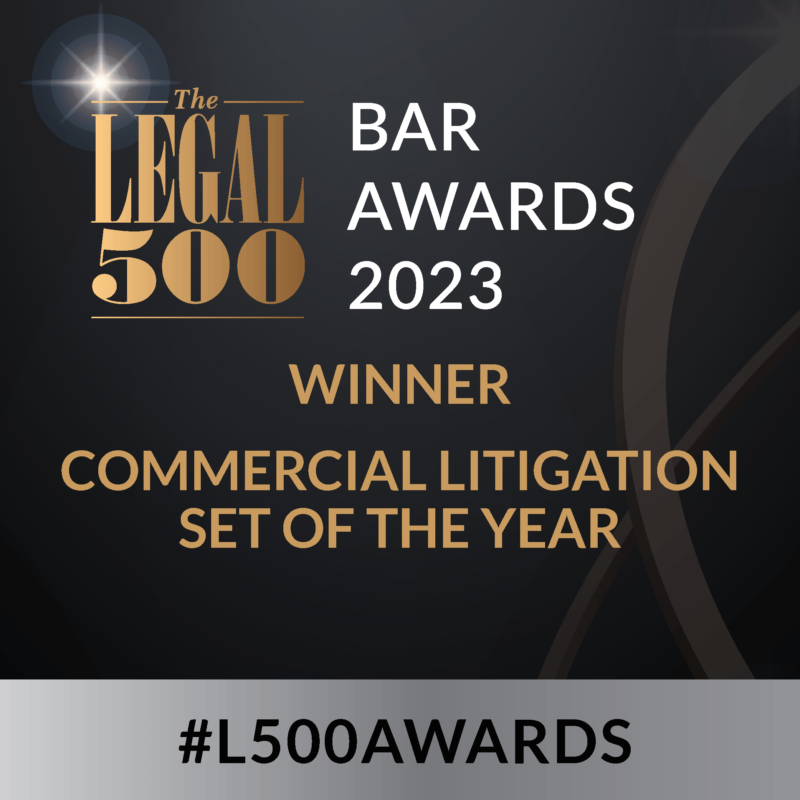Matthew Hardwick KC Success in Supreme Court Motor Finance Judgment
Mark Howard KC, Matthew Hardwick KC, Simon Popplewell and Frederick Wilmot-Smith (instructed by Eversheds Sutherlands LLP) represented FirstRand Bank, the Appellant in two of the three conjoined motor finance appeals in the very keenly awaited decision of the Supreme Court in Hopcraft v Close Brothers Limited; Johnson v FirstRand Bank Limited t/a MotoNovo Finance; Wrench v FirstRand Bank Limited [2025] UKSC 33 which was handed down on Friday 1 August 2025 at 16.35.
The judgment, which acknowledges the extent to which the decision of the Court of Appeal “came as a shock to the car industry” [54], represents a very significant success for FirstRand Bank and finance companies and motor dealer brokers across the motor finance industry. It is a hugely important vindication of their consistent position that: (1) motor dealer brokers do not owe fiduciary duties to customers seeking to buy a car on finance; with the result that (2) the payment of commissions by finance companies to dealers is neither a common law bribe nor dishonest assistance in the breach of a fiduciary duty.
The Supreme Court stated that the “main issue” which was “decisive of these appeals” [57] was whether “the continuing status of the dealer as seller of the car in the three-cornered transaction between dealer, lender and customer” is “fatal to the recognition of a fiduciary duty owed by dealer to customer in connection with providing a finance package”. The Court decided, with absolute clarity and general application to this type of motor finance transaction, that the dealer’s status as seller was fatal to the fiduciary duty claim, explaining that:
- (at [269]) “[A]lthough, viewed separately, the activity of the dealer as an intermediary between customer and lender in seeking a suitable finance package for the customer from among its panel of lenders might be regarded as a form of credit brokerage, this service was not being provided by the dealer as a distinct and separate service in its own right, as the service was in cases such as Hurstanger and Wood. It was simply a means whereby the dealer could make use of its knowledge and contacts in the car finance market to oil the wheels of what was for it essentially a sale transaction from start to finish”;
- (at [276]) “The typical features of the transactions are incompatible with the recognition of any obligation of undivided or selfless loyalty by the dealer to the customer when sourcing and recommending a suitable credit package”;
- (at [277]) “[T]he continuing status of the dealer as an arm’s length party to a commercial negotiation pursuing its own separate interests…is irreconcilably hostile to the recognition of a fiduciary obligation owed to another party in that negotiation. No reasonable onlooker would think that, by offering to find a suitable finance package to enable the customer to obtain the car, the dealer was thereby giving up, rather than continuing to pursue, its own commercial objective of securing a profitable sale of the car”; and
- (at [278]-[279]) the Respondents’ counsel (and indeed the Court of Appeal) had been wrong to seek to overcome this “apparently insuperable obstacle” by claiming that the typical transaction “should be viewed as if it had two separate stages” (negotiation of the car sale; followed by sourcing the requisite finance package) because “a finance package on acceptable terms was always going to be an integral part of what had to be negotiated to bring the transaction to fruition, and there could be no agreed disposal of the car to the customer unless and until finance terms acceptable to the customer were hammered out”.
The Judgment will be of significant interest to commercial practitioners generally. In particular it contains:
- a rigorous legal analysis of “what brings a fiduciary duty into being” confirming that: (1) the critical feature of a fiduciary relationship is the identification of some undertaking on the part of the fiduciary to act with loyalty [82]-[105]; (2) a statement by the dealer to the customer that “it would seek the most suitable finance package” “did not amount to an undertaking of fiduciary loyalty” any more than would a similar statement made by a shop assistant or wine waiter about an item or bottle of wine [281] and [80]; and (3) the weight placed by the Court of Appeal upon “findings of subjective trust and confidence, and of vulnerability, as indicative of a fiduciary relationship” was wrong [283]-[285] and [97];
- an equally detailed analysis of the law of bribery [111]-[240], including the key clarification that: (1) a fiduciary relationship is a “an essential requirement” for civil liability in the tort of bribery [192], [199], [201] [207]; (2) David Richards LJ had been wrong to suggest otherwise in Wood v Commercial First Business Ltd [2022] Ch 123 [202]-[203]; and (3) the Court of Appeal had been wrong to proceed on the basis that a fiduciary duty of loyalty was unnecessary [207];
- (whilst the issue did not ultimately arise in view of the absence of fiduciary duties) confirmation that in order to establish accessory liability for a breach of fiduciary duty a claimant must show that the defendant’s conduct was dishonest (1) “applying the two-stage semi-objective test now generally regarded as finally settled…by the Privy Council in Barlow Clowes International Ltd v Eurotrust International Ltd [2005] UKPC 37” and (2) emphasising that “the requirement to prove dishonesty is no mean forensic task” [74];
- a finding that that the reasoning of Tuckey LJ in Hurstanger Ltd v Wilson [2007] 1 WLR 2351 as to the sufficiency of partial disclosure in order to exclude remedies in bribery was wrong [225]-[227];
- in the context of a discrete issue in the Johnson appeal as to an unfair relationship under section 140A of the CCA: (1) an indication of factors relevant to s140A “unfairness” in the motor finance context [319]; and (2) important guidance that “the analogy between the facts of Plevin and those of the present case is imprecise” and that “it is not possible simply to apply the reasoning of the Supreme Court in Plevin to the present case” as “the two cases are concerned with different products on different markets” [326].
Read the judgment in full here.








